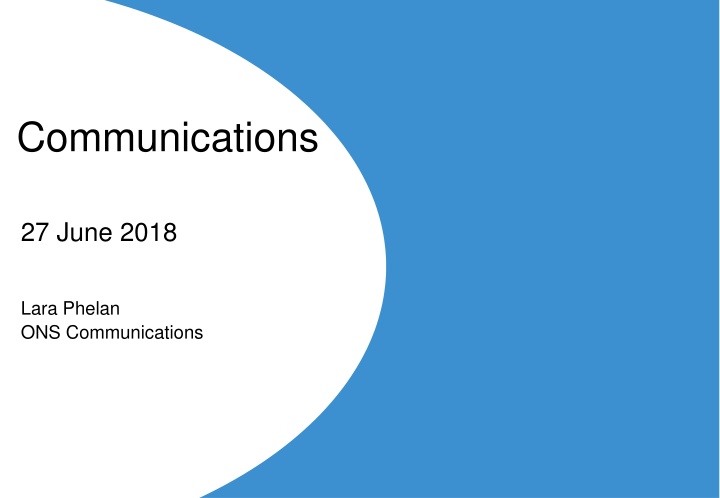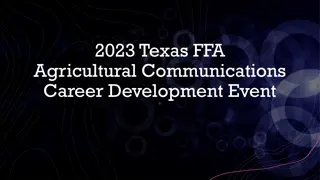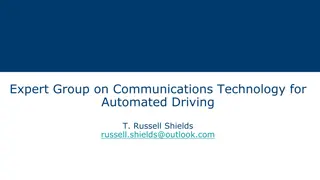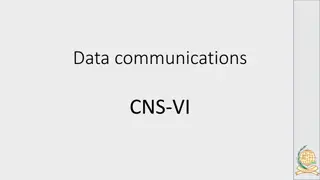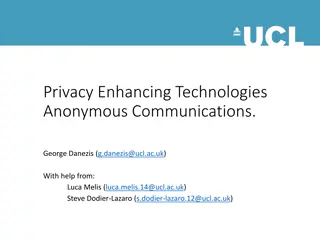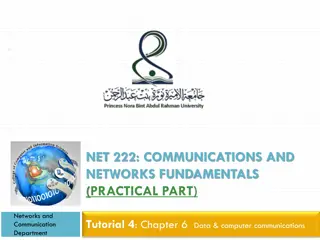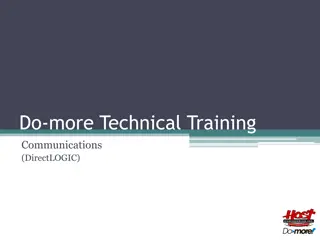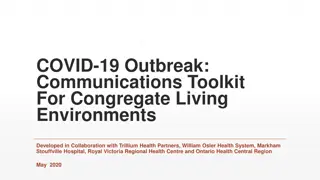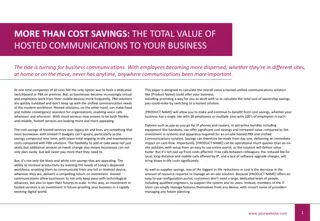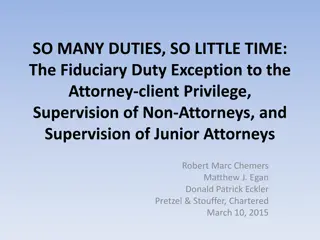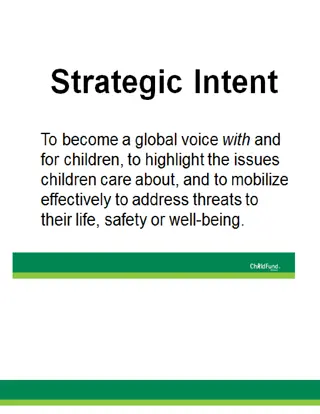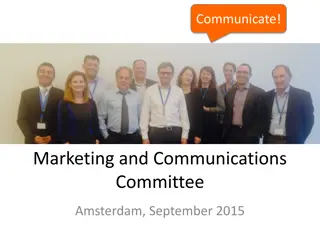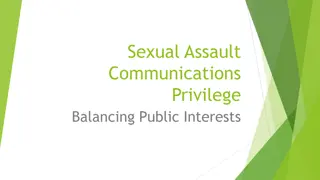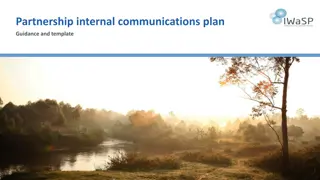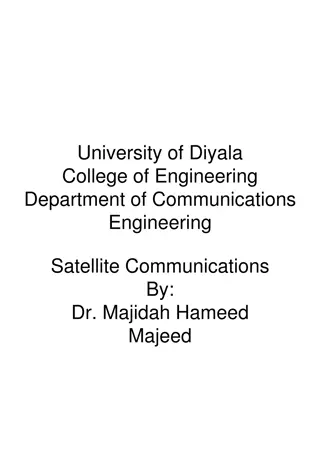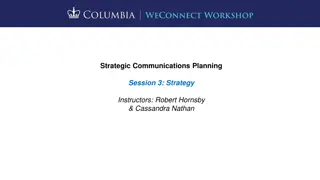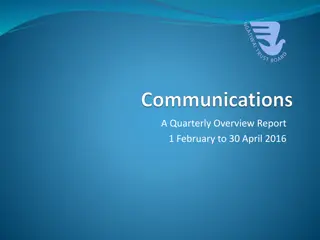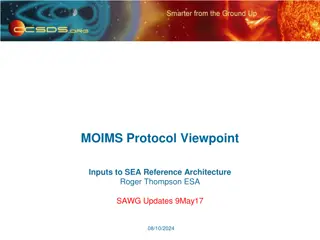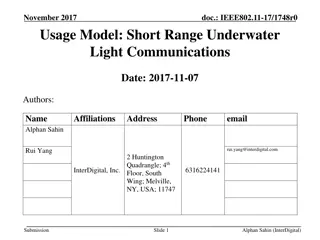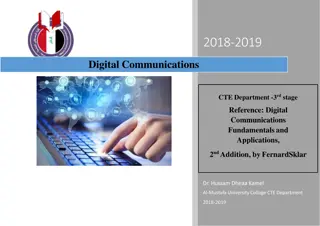Communications
Explore the importance of effective communication with stakeholders, workplan communication, and stakeholder engagement. Learn why effective stakeholder communication matters and common reasons for project failure due to lack of communication. Discover methods for communicating with stakeholders and understand the significance of stakeholder engagement for project success.
Download Presentation

Please find below an Image/Link to download the presentation.
The content on the website is provided AS IS for your information and personal use only. It may not be sold, licensed, or shared on other websites without obtaining consent from the author.If you encounter any issues during the download, it is possible that the publisher has removed the file from their server.
You are allowed to download the files provided on this website for personal or commercial use, subject to the condition that they are used lawfully. All files are the property of their respective owners.
The content on the website is provided AS IS for your information and personal use only. It may not be sold, licensed, or shared on other websites without obtaining consent from the author.
E N D
Presentation Transcript
Communications 27 June 2018 Lara Phelan ONS Communications
Objectives Methods for effective communication with stakeholders Effective communication of the workplan
Why communications matter To have impact! e.g., acceptance, enable people to make informed choices, know the potential consequences of their actions, enable change To inform the public, partners, employees, and other stakeholders and ultimately persuade them to maintain a positive or favorable view about the organization, its leadership, products, or political decisions
Why Stakeholder engagement matters Stakeholders have a vested interest in the project If you engage with relevant stakeholders you are more likely to achieve a reciprocal objective on key issues
Common reasons for project failure: lack of communications or poorly done, lack of visibility; not perceived as relevant; disinterested stakeholders; failure to satisfy stakeholders expectations
How visible are you? Where do you want to be and how are you going to get there?
How engaged are your stakeholders? Do you have a collective view on who your stakeholders are? Have you prioritised them? What do you want them to think, feel and do?
Your work matters Population ageing is poised to become one of the most significant social transformations of the twenty-first century, with implications for nearly all sectors of society, including labour and financial markets, the demand for goods and services, such as housing, transportation and social protection, as well as family structures and intergenerational ties . Source: United Nations
Methods for effective communication Methods for effective communication with your stakeholders with your stakeholders
Stakeholder mapping Manage closely Keep satisfied Keep informed Monitor
Stakeholder relationships mapping (examples used are illustrative) Journalists High Suppliers The public Employees Minister Health Government departments Local Employees community groups Influence Single interest campaign groups Parliament, MPs Academics Business users Key to stakeholder relationship priorities for month of June Awareness raising Low Partnership working Consultation Explanation Interest Low High
Detailed stakeholder analysis Stakeholders will have issues they care about, things that will upset them, things they want, and a view on what s in it for them or what s against it for them There will also be various factors that will influence them Understanding what is influencing a stakeholder to behave the way they are can help to formulate a plan to engage and influence them For certain key stakeholders, undertaking this level of analysis will help to develop suitable engagement strategies and plans For example, the headngs below could be used to analyse a stakeholder in more detail. This level of analysis allows for more specific messages to be developed that will not only inform, but influence the stakeholder appropriately What s against my interests? Power/ Influence Hot Buttons Stakeholder Interest What s in it for me?
Stakeholder messaging Organisation or individual Decision/outcome to communicate How do we want them to act? How will we communicate with them? Rationale for approach What s the message? e.g., Critical friends Individuals: A, B, C Draft workplan e.g., Face-to- face and correspondence e.g., Peer review Raise profile of the work Organisation B Workplan published Relevance of our work in related field e.g., potential advocates but less about action, more about ensuring they are well- informed e.g., Through specialist media coverage e.g., Start to ensure balanced (and ideally) positive debate/ conversations Through owned channels Organisation C Workplan initiatives This is what it could mean for you e.g., Potential users e.g., Through hearing messages from our advocates e.g., Be on the agenda of x & y
Types of partnerships example Source: Government Communications Service (GCS) model
Effective communication of the workplan
Communication of the workplan Deciding what success* will look like Considering the environment you want to create to ensure your work lands well (e.g., build advocacy, media interest) Knowing who your key audiences are and identifying what you want them to think, feel, do Identifying other audiences that you would like to build-up interest/support Identifying effective channels for communication *Success might mean something different to different people- establish what your stakeholder community perceives success to be for them
Planning communications
Campaign approach A campaign is a planned sequence of communications and interactions that uses a compelling narrative over time to deliver a defined and measurable outcome Source: Government Communications Service OASIS model
Objective Set out what the communications activity is intending to achieve Start with the policy aim and develop communications objectives that will deliver this Include the role that communication will contribute to achieving the policy aim and the role that individual activities or channels will play in meeting the communications objective Objectives should be achievable, measurable - expressed numerically where possible, focused on outcomes not outputs and related to changing attitudes and/or behavior Source: Government Communications Service OASIS model
Audience insight Who is the campaign aimed at? Do you need to change or influence their attitudes and behaviours to help you achieve your objective? What are the barriers to change that your campaign can help to address? Source: Government Communications Service OASIS model
Strategy The big idea What you re going to do The vision and aim Key messages (insight-driven) Overall approach: resources, allocations, priorities, milestones, interdependencies and risks
Implementation Once you have defined your approach, you should set out how you will deliver your communications and what tactics you will use Develop a clear plan that allocates resources and sets out the timescales for delivery Bring influencers and partners on board to increase impact and use low cost approaches where possible; particularly PR and partnerships Source: Government Communications Service OASIS model
Scoring (Evaluation) You should monitor outputs, outtakes and outcomes throughout your campaign and evaluate once it is complete As much about is it working as it is did it work Why? And how do you know?
In groups, think about what your OASIS plan may look like for the communication of the workplan Group session - Objective - Audience insight - Strategy - Implementation - Scoring
In groups, think about how you will ensure effective and timely communication with: -each other -the UN Stats Committee -the work strand leads -ONS Group session
In groups, identify who are the key stakeholders for your workplan What do you want them to think, feel, do as a result of it? Group session
In groups, think about how you will share information, progress reports, best practice Showcase good examples of where data are being improved Group session
